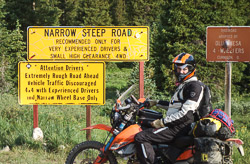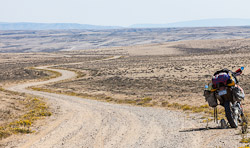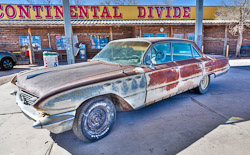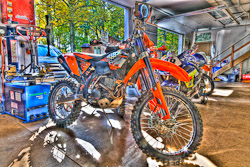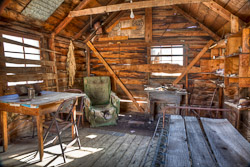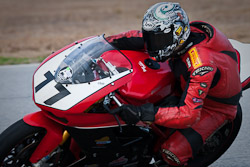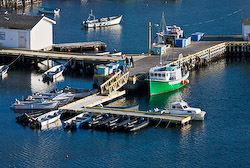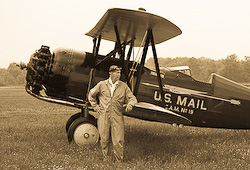Software You Didn’t Know You Need
When I first started making my own prints, back in my college days, I spent a lot of time in rather stuffy dark rooms working with a lot of messy and smelly chemicals. When my co-op period flipped over to a work experience (or vice versa), I packed up my somewhat portable darkroom gear and dragged it all to my new digs, wherever that might be. It took a lot of time and work.
Fast forward to the digital darkroom of today…. a computer with a decent (and calibrated!) display, photo editing software of choice (yes, there are choices), and a printer, (assuming prints are your intended final product). Certainly the tools of imaging have gotten a lot lighter and nearly never smell. (Actually, I have used software that “stinks”, but it is usually my brain that is offended now and not my nose!)
I think I would argue that once you have captured your digital images, the balance of your work relationship with them is via the computer, or more specifically, the installed software. Yes, you have a photo editor, but have you taken a step back from the keyboard recently and taken stock of the other software tools that you use, or perhaps should use, to improve your imaging work flow and security?
Here are some of the really useful programs I have found to be indispensable in my computer environment.
TinySpell+ (www.tinyspell.com)
This clever little program is a spell checker that pretty much watches everything you type, regardless of the application. I am a stickler for correct spelling, but the dictionary in my brain is only so-so and only larger applications usually have them built in. Think of the situations where you are writing and mistakes can be embarrassing and require rework later… titles in your photos and galleries, text entries on your web site pages, posts in on line forums, etc., etc.. When you are typing along and make a mistake there is a “boink” from the computer alerting you to your mistake. You can fix it right then or wait until you are farther along. There is a free version, but the full featured one costs a staggering $7. You can pay more if you like…. I paid $10 just so I wouldn’t feel like a cheapskate! A real bargain.
Clipmate (www.thornsoft.com)
Clipmate is a clipboard ‘extender’. Everyone is familiar with the clipboard functionality built into Windows. Whatever is selected, hit Ctrl + C, go to the new spot in the same or any other application and hit Ctrl + V, and presto the part you grabbed is now pasted into the new spot. Trouble is, the standard clipboard only has the capacity to hold one clip at a time. What if you could save all of the things you ‘clip’ and then have them available to paste later? Think of the possibilities! This, folks, is a very powerful and work saving utility. I am lost on a computer that doesn’t have it. Highly recommended and not too expensive… $35 for a single license with many reasonable options for multi computer environments, like a home or work network. Free trial, too.
Let’s talk about data security. Here’s the tough love speech. If you don’t have multiple copies of your precious photos and other important data, then you are going to suffer some real heartache! When you think hard drive, think firecracker with a fairly long fuse. How long is the fuse? One never knows until it is too late. Present hard drive technology is amazing. Amazing that it works at all, that is. Hard drives are electro – magnetic – mechanical devices with working tolerances that are nearly too small to fathom. When those tolerances are crossed, puff, your data is toast. I have had new drives fail during formatting. I have retired working drives due to lack of capacity after several years of hard use. Too many to count have failed ‘before their time’ without warning. It’s a crap shoot and I for one can’t wait for the solid state hard drives to catch up to and replace the present technology. Until that day, we have to assume the worst and be prepared for it. For a back up strategy to be effective, it needs to be as nearly automatic as possible, otherwise, human nature being what it is, it gets forgotten or put off until another more convenient time.
I use a multi-faceted approach. If the computer is “mission critical” and down time is costly, I use a RAID ‘mirror’ array…. essentially two drives that are virtually the same, but the computer sees them as one. Either one can fail and the bunny keeps marching. The downside is that it requires more $ and is more trouble to set up. Most of you (and myself on my photo computer) use a single hard drive as the C: drive and this is where the operating system, program files, and your data is stored. Kind of breaks the old adage, “don’t put all your eggs in one basket”, doesn’t it? Another approach to solving this problem is to install a second hard drive in the system which has been ‘cloned’ from the first. The cloning process is not difficult and requires special software (more on that below), but your system then sees them as two distinct drives, C: & D:. If C: drive failed, the operating system would automatically see the second drive as the new C:, which is great as far as that goes, but the data files would only be current at the moment they had been cloned. So this setup is not complete without software which monitors the data files (of your choosing) on the C: drive and keeps the same files “synchronized” on the second cloned drive in real or near real time.
Vice Versa (www.tgrmn.com) is the backup – synchronizing software I use to keep my two drives data synced. It is loaded during start up and resides in the system tray. Once the backup profiles have been set up the program runs on its own, constantly monitoring the source files and copying any changes noted to the target drive. Neat, no muss, no fuss.
One back up copy of your photos is not enough. Think fire, theft, lightning or any other physical disaster. Both copies can be gone. Not good. There are a number of alternatives to cover this, including NAS (network addressable storage), if you have a network. The best choice, IMO, is one that uses external hard drives that spend most of their time in a location different from the PC. Some discipline is required as you need to periodically pull the drive out of storage, hook it up to the PC, typically by USB or Firewire and manually commence the synchronizing. External hard drives cost more because of the enclosure, but a cheaper internal hard drive will work perfectly just sitting on your desk with the use of an inexpensive adapter to provide power and a connection to a USB port. In this scenario I use a universal hard drive adapter made by Apricorn (www.apricorn.com) and available from them or www.newegg.com. This particular adapter will work with both conventional IDE drives or the newer SATA drives. The real bonus is that this adapter comes with cloning software. What a deal!
For these synchronizing operations I like a program called FolderMatch, (www.foldermatch.com). With this utility, I can simultaneously look at any two folders, compare them, see the differences and make them the ‘same’ in a dozen different logical ways. A very versatile and useful program.
The last two utilities I will mention here have little to do with your photo work, but pertain more to maintaining your PC. I could get sidetracked about the issues of the Windows operating system, and, yes, Mac is an alternative, but the reality is that most of us are running Windows in some flavor and Windows is a messy operating system prone to gradual self destruction. For years, I have used the “One Button Checkup” feature which is part of the Symantec (Norton) security package I installed. It is set to run every Friday at 5 PM and it looks at the registry, shortcuts, and program integrity, analyzes them for problems, identifies any it finds, and ‘fixes’ them. It always amazes me how many errors are found on a weekly basis. I can’t imagine what lurks in a machine that has been running several years since the OS was installed. If you don’t use any of the Symantec products, I recently loaded a free utility that does much the same thing… WindowsCare Personal, (www.iobit.com).
This last utility gives you the opportunity to look at what is being loaded from the Windows Start up menu, and if you choose to, block it from starting. You would be amazed at the number of not so useful programs that get installed over time that you end up not using, but take computer resources that would be better used by the other software that you do use. Check out What’s Running… (www.whatsrunning.net).


